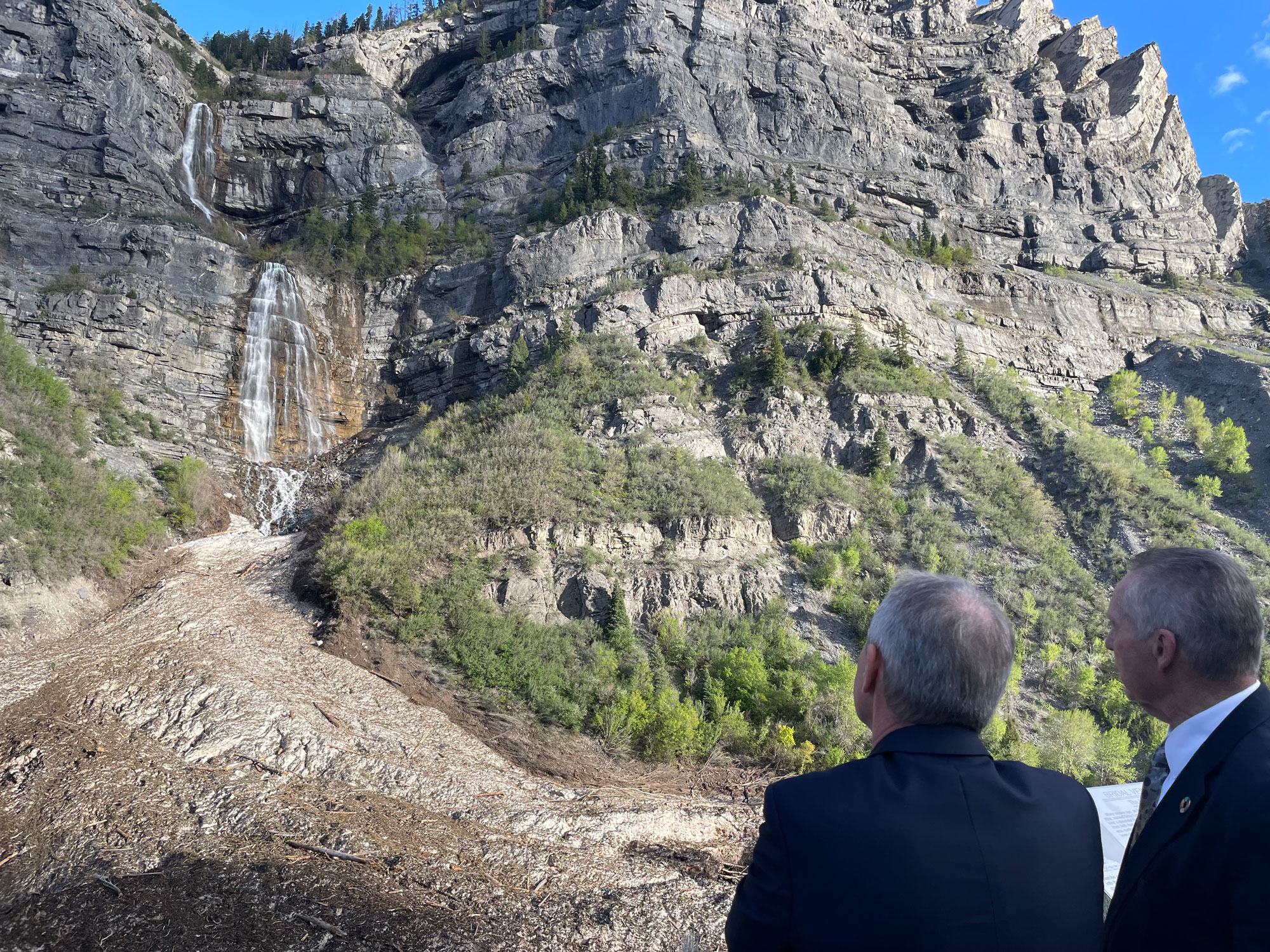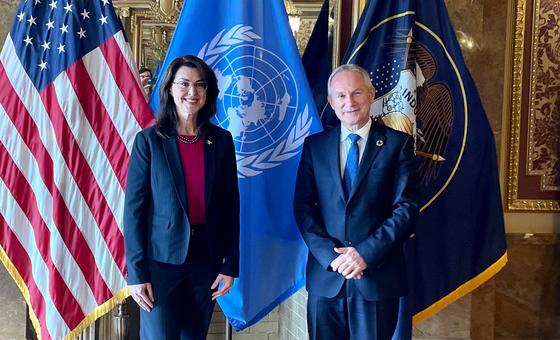That was the message from the President of the UN General Assembly, Csaba Kőrösi, on an official visit to Salt Lake City in Utah, where he met with top state officials, students and academics, and local community members.
“There are commonalities because the entire world is in a water crisis, which is ignited by climate change and changing our water cycle,” Mr. Kőrösi said in a meeting with Lieutenant Governor Deidre Henderson.
Climate migrants
“I don’t want to scare anyone, but unless we solve the water management crisis, in the coming 60 to 70 years, hundreds of millions of people will have to move,” he added.
The senior UN official urged support for a global water information system, created as part of the UN system. A new study published in Science magazine on Thursday showed that climate change was a key factor in the shrinkage of more than half the world’s lakes and reservoirs since the 1990s.
This is one of the nine gamechangers agreed to at the UN Water Conference held in New York in March, which also includes:
- Integrating water and climate policy at national and global levels
- An early warning-for-all system
- Decoupling agriculture, energy production and water
- Valuing water accurately
- A global water education network
- Support for transboundary cooperation
- Creating a unified water architecture managed by a Special Envoy with an independent scientific advisory panel
- A follow-up to the UN Water Conference.

General Assembly President Csaba Kőrösi admires the beauty of a waterfall in Provo, Utah, during his official visit to the state.
Colorado River and Great Salt Lake
The President made the ask after meeting with water experts from the Utah Department of Natural Resources. He was informed that Utah is now in its 23rd year of drought because of climate change, with significant consequences for the Colorado River and Great Salt Lake; the largest saltwater lake in the Western Hemisphere.
And while higher air temperatures have brought with it more precipitation, the heat also means there is more evaporation, and more runoff, as parched land is simply unable to absorb the water.
Historic floods
Drought-stricken Utah is currently facing flooding after an historic amount of rain and snow during early spring.
Complicating matters further is that the management of the Colorado River system is firmly anchored in the Colorado River Compact of 1922, giving rights to two countries and seven states, and stipulating water levels that – due to climate change and overuse – are no longer possible.
Local officials said that they are focused on “balanced solutions that are long-term,” with discussions touching on agriculture use, water treatment and reuse, and promotion of water conservation through legislative and public information means.
Sustainable development peaks
While in Utah, Mr. Kőrösi also focused on sustainable development on mountains, which is a topic highlighted in a 2022 Secretary-General report on that topic and the International Year of Sustainable Mountain Development.
One of the challenges highlighted by representatives from rural communities was the lack of social development and inclusion, heightened by shutdowns and cut-offs enforced during the COVID pandemic.
“Everyone needs to be considered in policies,” said Alitha Thompson, a 36-year-old non-traditional student at Utah Valley University, who lives in a rural community of Gunnison Valley, about 1.5 hours outside the University.
“Just because you’re different doesn’t make you wrong. Everyone’s voice needs to be heard,” said Ms. Thompson, who because she didn’t have daycare that day, brought the youngest of her five children to the meeting with the President.
She said that about one-third of Utah’s population lives in mountain areas; some of the communities suffer levels of poverty more commonly experienced in developing countries.
200 Marathons Later: A Water Activist’s Epic Journey to the UN

